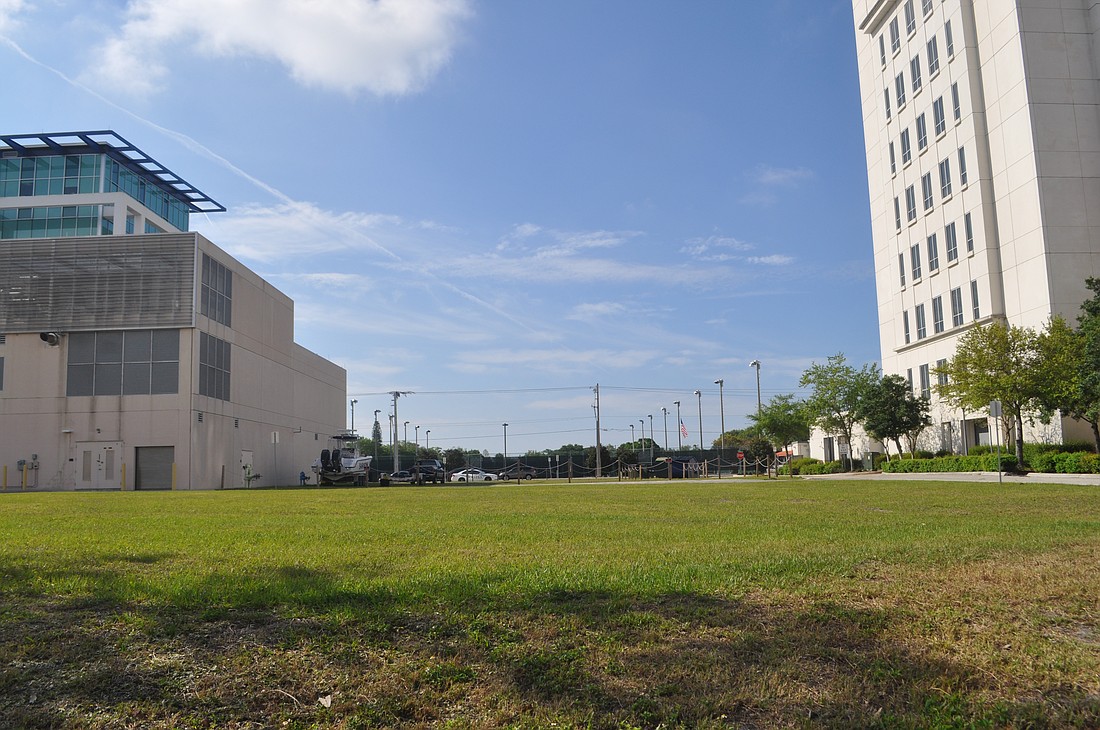- April 28, 2024
-
-
Loading

Loading

Ultimately, City Attorney Robert Fournier’s position on a parcel of land the county hopes to obtain from the city can be summed up thusly: He doesn’t think the city has a legal obligation to give it up.
The basis for that position, detailed in a 14-page memo Fournier sent to the City Commission last week, is much richer. The county’s claim that it is entitled to the former site of the Sarasota Police Department headquarters dates back to 2003, and Fournier’s examination of that claim provides a glimpse at the oft-troubled relationship between the city and county over the past decade.
Fournier wrote that it is impossible to be brief when detailing the backstory of this land. That history began with a 2003 memorandum of understanding between Sarasota County and the city of Sarasota. Still, the city attorney’s concluding statement gets to the heart of what he perceives as a one-way conversation in the 12 years since the county and city approved that MOU.
“There is and has been a total lack of consideration coming to the city,” Fournier wrote. “Time has proven the MOU to be a sham.”
When it was approved, that MOU was heralded as a sign of a newly dawned peace. In spring 2003, relations between the two governments were rocky. The county discussed moving many of its facilities to a campus outside of the city near I-75, bringing the conversation to a boiling point and both municipalities to the negotiating table.
By the summer, all appeared well. The city and county both approved the MOU, which detailed eight “principles of agreement” to be implemented in the future. Among those points of agreement, the city agreed to convey the former police station site, located at 2050 Ringling Blvd., to the county.
In response, the county agreed to expand its court and administration needs within the existing judicial complex area adjacent to the site.
But Fournier ascribes more nefarious origins to this peace brokering. When the county discussed relocation, the city was motivated to preserve a vital economic engine. Another city concession proffered in the 2003 MOU calls for the downtown Community Redevelopment Area to expire in 2016, a second discussion the city hopes to reopen.
“I believe that the county administrator skillfully exploited the panic he had engendered by his announcement to the county’s benefit and the city’s detriment,” Fournier wrote.
Over the past 12 years, city and county staff have had multiple conversations regarding the MOU. Those conversations have been held, Fournier said, because the MOU needs subsequent action to codify the points of agreement. As the City Commission prepares to discuss the land at its next meeting, Fournier wanted to be clear regarding the legal status of the property.
“I’m certainly not opposed to the conveyance on terms that both of the commissions agreed to,” Fournier said. “I just don’t think there is an existing legal obligation to transfer it now.”
The most recent conversation surrounding the police station land began in December 2013, when County Administrator Tom Harmer wrote a letter to City Manager Tom Barwin requesting the conveyance of the site. In an agreement drafted by the county, Harmer sought city approval to allow the county to use the land as a parking lot for up to 10 years.
The county also said that, while it intends to develop the land for judicial or administrative purposes, it could end up being used for a different city-approved public use.
“The city and county recognize the dynamic nature of the county’s wide range of obligations and needs,” the proposal read.
In the MOU, the county agreed to “take all legal means to codify the intent to remain in the downtown for the future.” In his letter, Harmer touts that the county is still downtown — but Fournier said attempts to codify that obligation have fallen through.
Earnest efforts to hammer out an interlocal agreement began in 2008. Fournier sought to create specific terms for maintaining the county’s presence downtown, asking staff to agree to occupy certain county-owned buildings downtown or to maintain a specific number of employees downtown, among other proposals.
All of these requests were denied, Fournier said. Without a definition of how the county would maintain its presence downtown, upholding an agreement in court would prove difficult. The county offered to include clauses that a “significant presence” and “meaningful offices” would be kept downtown, but that came with an addendum that the county was obligated to nothing specific. Negotiations fell apart in 2009.
County attorneys declined to comment on the subject, and county staff was not made available to respond to questions.
Over the past year, the county’s impatience with the city on this issue has grown: In February, the County Commission unanimously halted its downtown service expansion plans until the city addressed the land transfer. The question of whether the city ultimately conveys the land is in the commission’s hands.
Although the memo paints the county in a harsh light, Fournier said he did not have any opinion on whether the city should or shouldn’t transfer the land.
“I just wanted to get the other side out,” Fournier said. “They seem to be taking the position that the city was breaking an agreement.”